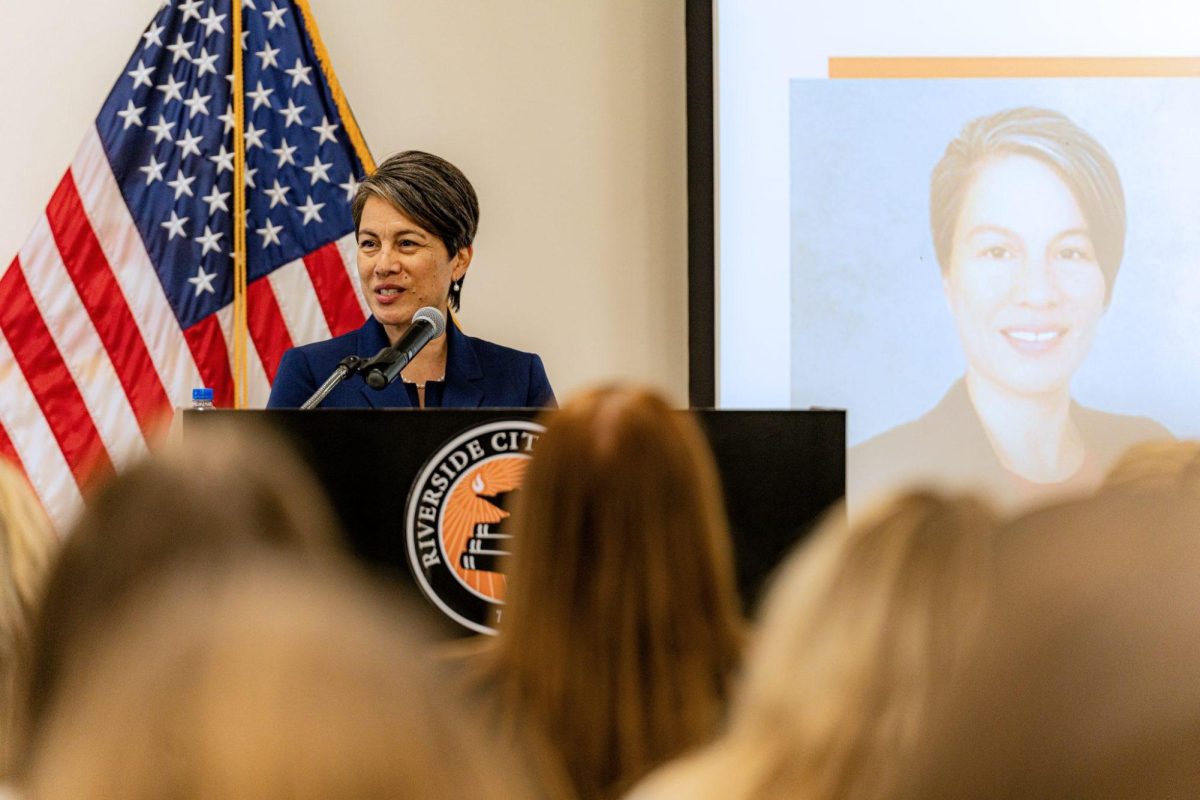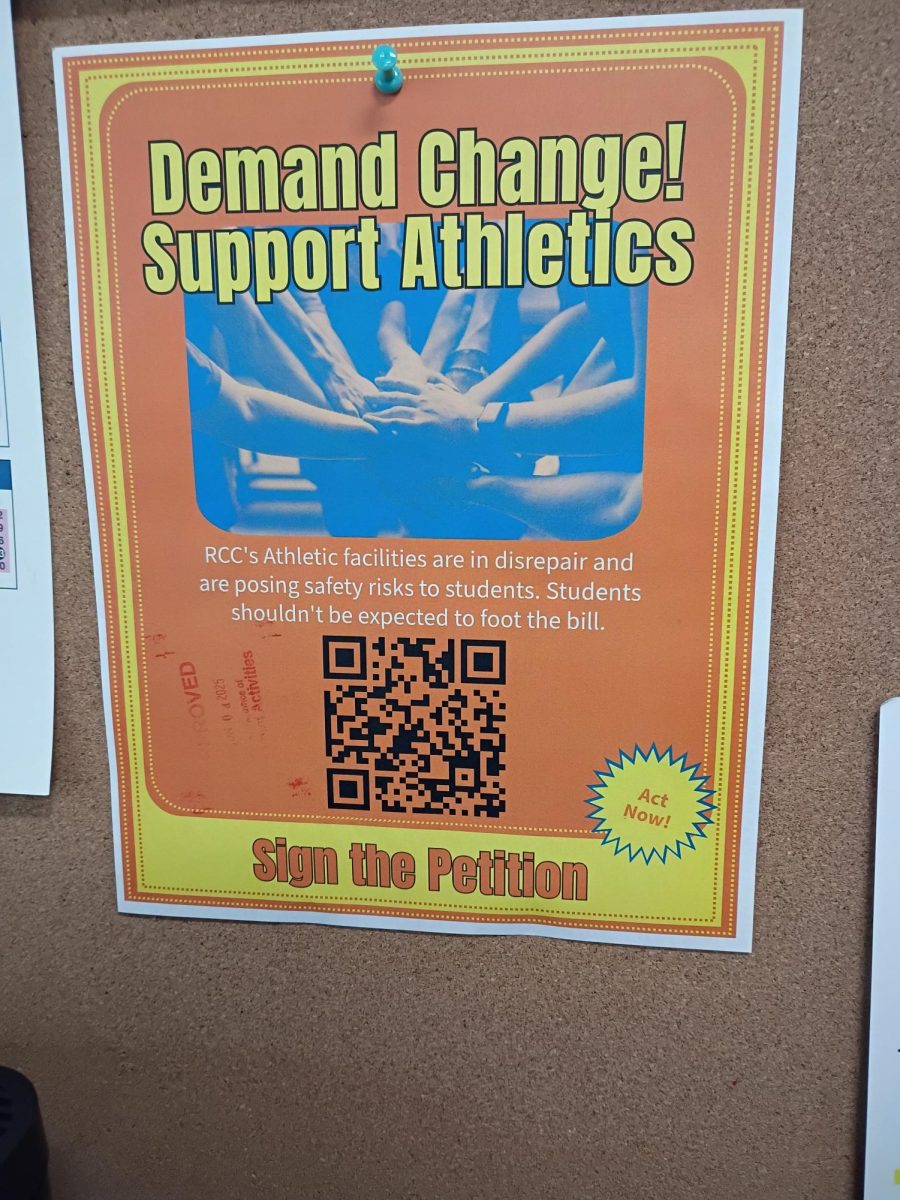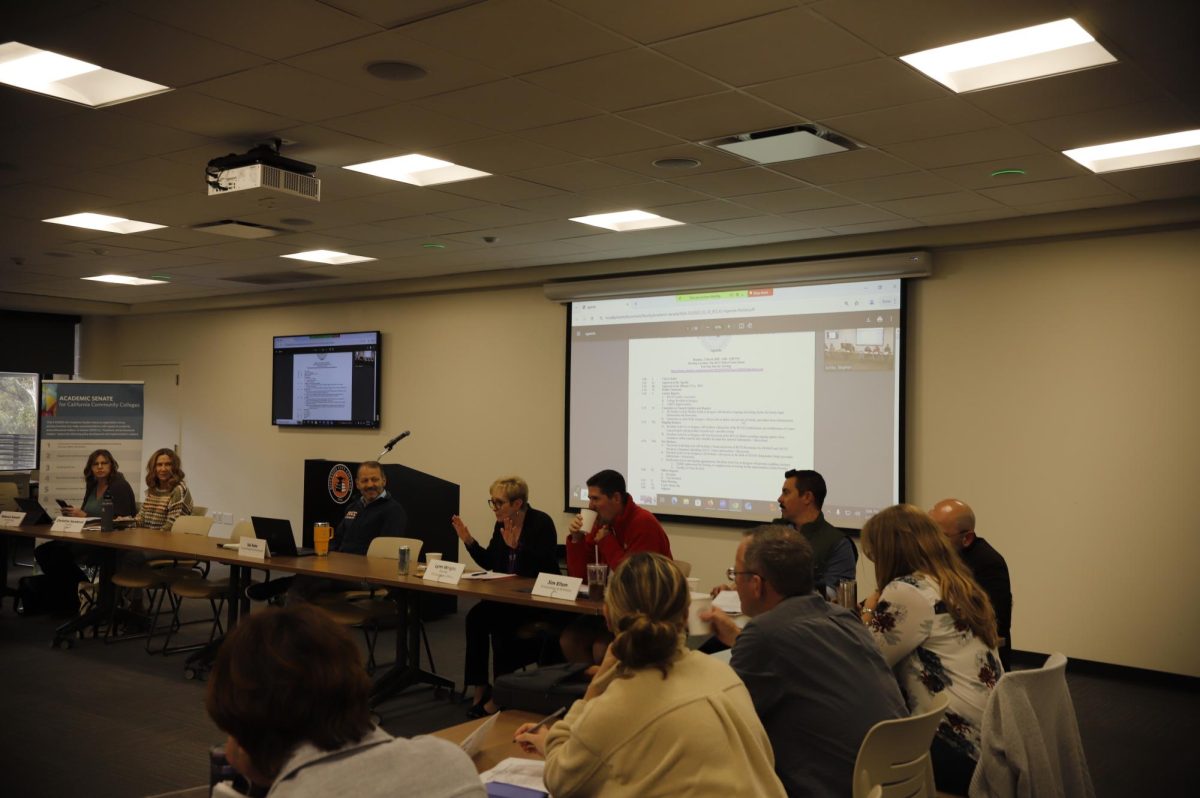By Sam Finch / Features Editor
By Sam Finch / Features Editor
After years of planning and development, the completion of a new building for the Riverside City College School of Nursing has ushered in a period of renewed excitement for the program’s future.
“There are many things I see for this building,” said Tammy Vant Hul, ADN assistant department chair and associate professor of Nursing. “One, it’s going to offer our students tremendous opportunities for learning. Two, I see it as a community outreach. I see nurses in the community coming here for classes.”
Vant Hul herself graduated from the RCC School of Nursing in 1993, returned to teach part time after earning her bachelor’s degree from Loma Linda University, and became a full-time faculty member in 2002 upon completing her master’s degree.
“It was actually like I had never left,” she said with a smile.
Given her experience, Vant Hul examined the improvements to the School of Nursing’s facilities.
“Oh my goodness,” Vant Hul said with a laugh. “Have you been to our old building? You know, they educated nurses out of there for almost 50 years. Back then, the classes were smaller, we didn’t have as many teachers, we didn’t have as many students, and now look at us. We fill the building, it’s a constant flurry here. And so what we did at our old building, look at how much better we’re going to do it here. Have you seen our facilities here? It’s remarkable. The mannequins can do pretty much anything a person can do, so students can really practice without making mistakes in the hospital.”
Isaac Dannelley, nursing simulation lab specialist, elaborated on the advantages of such mannequins.
“We’ve got a wide variety of different types of mannequins that we use with different levels of fidelity, ranging from a low fidelity, which is basically just a mannequin,” Dannelley explained. “It’s got parts that can be changed around, I can change genders, I can put wounds in them, students can give them tubes in their noses, or give them catheters, and all kinds of different stuff there.”
“Then you have medium fidelity simulators,” he continued. “Those have blood pressure, they can talk a little bit, they have vital signs, you can listen for heart rates, I can give them lung sounds, different bowel sounds, things like that. Those are all kept in our learning lab.”
“Now, in the virtual hospital, we’ve got our high fidelity simulators,” Dannelley said. “These are fully programmable and state of the art. Most of them are brand new, we got them less than a month ago. Now what these guys can do, everything I said before, and I always feel like I’m doing a sales pitch, plus I can set up all kinds of different trigger conditions.”
According to Dannelley, these trigger conditions include asthma attacks occurring once a student walks into the room as well as realistic reactions to medication levels.
“They’ve got pulses in their necks, their arms, their wrists, their legs, they can blink, if you shine a light in their eye, it actually reacts correctly,” Dannelley said. “And I change that too, so if I wanted to simulate neurological trauma, such as a blow to the head, I can make it so that one of the pupils doesn’t react.”
Dannelley has been involved with the RCC School of Nursing for the past four years and treasures his time with students.
“Getting to see their eyes light up when they first start doing simulation and realizing just how detailed it is, and how much it’s just like the hospital, watching that and getting to be a part of that, is very gratifying,” he said.
Students, who with the proper study and guidance, may one day end up like Vant Hul.
“I’ve always been interested in nursing,” Vant Hul said. “When I graduated from high school back in the ’70s, I went right into my prerequisites for nursing school, then I got sidetracked by getting married and having children and so on. Then, when I was in my thirties, I came back and actually completed a nursing program. I always wanted to be a nurse. I think if you asked any of the teachers here because I think, I’m not sure of the exact number, we have a 23 member faculty, and of the 23 members, nine or 10 of us are graduates of the program. If you asked any of them, they’d tell you that they’ve always wanted to be nurses.”
The program at the RCC School of Nurses can be broken down into two branches, which Vant Hul explained.
“We have two different programs, an associate’s degree, the registered nursing program, and we have the vocational nursing program,” she said. “For the vocational nursing program students have prerequisites that they have to meet and then, currently, we have a part-time VN program and a full-time VN program, so those students could be here anywhere between 1 to 2 years, depending on whether they’re full-time or part-time.”
“The RN program, we have a 2-year program, and we don’t have part-time, it’s a full-time program, and what we do there is we have what we call generic or traditional students who start at the beginning and end at the end,” Vant Hul said. “And we also have a bridge program so that our VNs can come into the second year without having to repeat that first year.”
And so, with new, state of the art facilities and a remarkably low dropout rate, between 2 and 8 percent depending on the semester, Vant Hul said, the future of the RCC School of Nursing is bright indeed.






